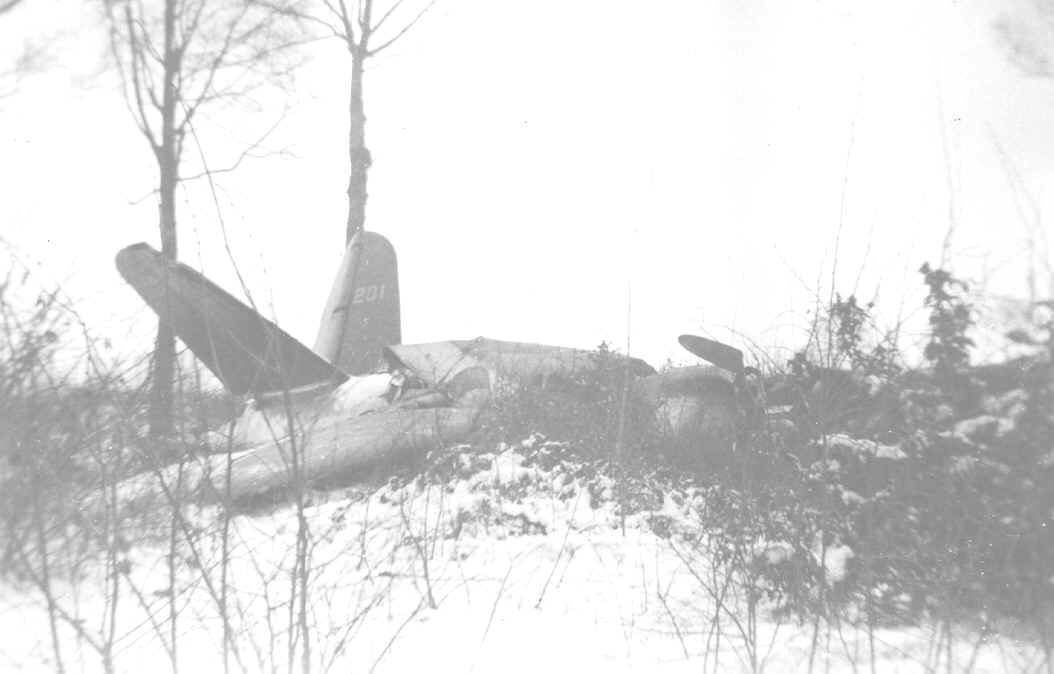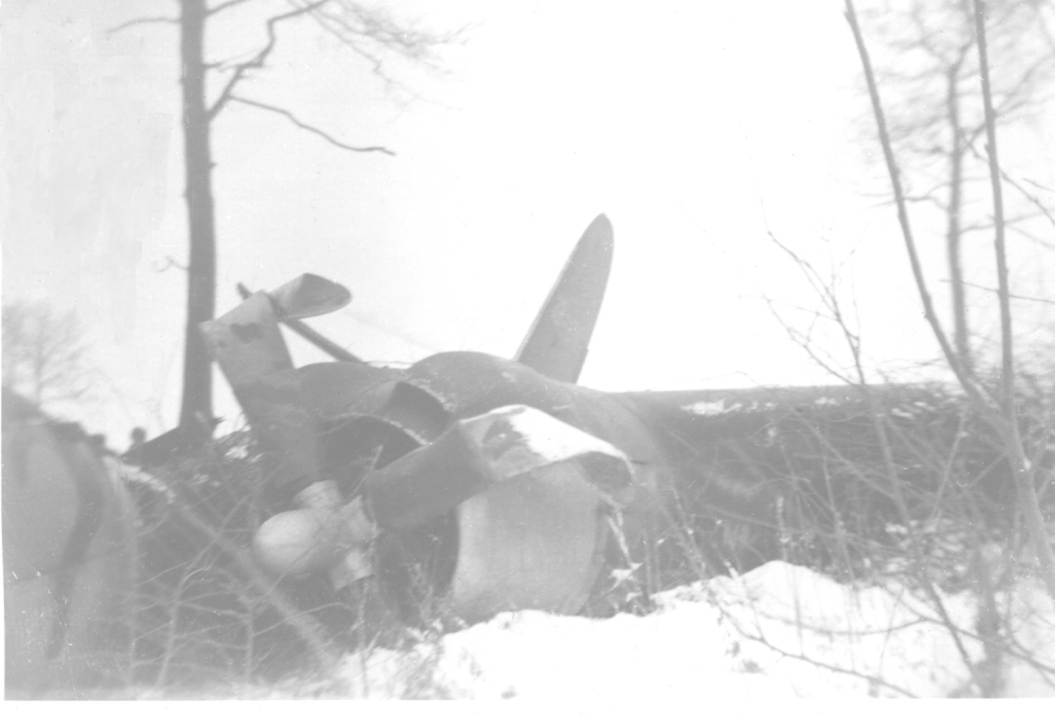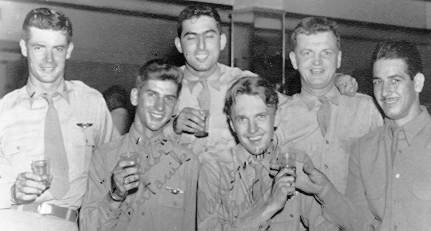Battery
Corporal
Willis S. Cole
Military Museum
A Non-Profit Corporation
Kirkland, Washington U.S.A.
"Where's It At?"
B-26G-1-MA, SN: 43-34201

"Where's it
At?"
lying in the Boise de Buire, Jan., 1945.
The wing in view was cut off the bomber by an oak tree,
setting the fuel on fire. The tree was pierced through and
through by the 50-Cal. machine gun located just outside the
Co-pilot's seat. He told me, it looked real big as
the plane
bounced toward it.

Listed as 'an aircraft accident, "Where's It
At?" actually crashed
without landing, while attempting to return from a mission.

"Where's It
At?'s" crew before leaving the U.S.A.
L. to
R.: 1st Lt. DuBois, 1st. Lt. Britanik, Sgt. Assey,
1st Lt. Boettcher, Sgt. Glass, K.I.A.,
Sgt. Flores.

Lt. Hugh Wesly Robbins, K.I.A.
On a Pathfinder marking
mission, on 22 January, 1945
"Where's It At?'s"
left engine was struck by flak on the inbound
run to the target. The target was well hit and marked with the
normal accuracy of Lt. Robbins. The left engine was cutting out
after being hit by the flak. It continued to cut out all the way back to
the air base.
Upon arrival at the base, they found their
vision obscured by
a heavy snow storm. With the left engine cutting out, several passes
were made at the runway, however a correct alignment could not
be made and it was agreed via radio control, Drunkard
Control,
that the bomber would try to reach A-74.
About 5 miles NNE of the base, the
bomber's left engine cut
out and the right engine also quit running. As they descended
through the clouds and broke free, DuBois saw a concrete telephone
pole in the center of the field he was trying to land in. He pulled the
stick back and the bomber rose enough to clear the pole. The
bomber than slammed into the ground one, twice and entered
into the Boise de Buire, about 3/4 mile from the crash site of the
B-24J, SN: 41-51226 two months earlier close to Tincourt-Boucly.
Breaking its way into the woods, the bomber hit
a oak tree,
which brushed down the Co-Pilot's side, ripping the wing off and
and the bomber came to rest broken apart. The bomber's slamming
into
the ground caused the OBOE Path Finding Equipment, which
weighed about 2,000 pounds, to break loose and fall onto
Lt. Robbins and Sgt. Glass who were braced in the radio room.
Both Robbins and Glass were crushed to death.
As the bomber came to rest the fuel
spilling from the broken
right wing caught on fire. Both Lt. DuBois and Lt. Britanik, the
Co-pilot, were later awarded the Soldiers Medal for their efforts
to remove the bodies before the fire reached them and in helping
their wounded crewmen. The Soldier's Medal is the highest award
a serviceman can receive for non-combat heroic actions.
1st Pathfinder Squadron (Prov)
Attached: 397th Bombardment Group (M)
Peronne A-72 Air Base
9th Army Air Force
Crew: 1st Lt. Joseph M. DuBois, Pilot, Soldiers Medal
2nd Lt.
Richard R. Britanik, Co-pilot, Soldiers Medal
2nd Lt.
Hugh Wesly Robbins, Navigator, K.I.A.
Buried:
Cedar Bluff Cemetery, adjoining the Episcopal Cemetery,
Plot
293, Grave 3, Annapolis, Maryland
2nd Lt. Richard H. Boettcher, Bombardier
Sgt.
William G. Glass, Engineer, K.I.A.
Buried:
Epinal American World War Two Cemetery
Plot
B, Row 42, Grave 36, Epinal, France
Sgt. Samuel M. Assey, Radio Operator, Gunner
Sgt.
Mike Flores, Tail Gunner
The mission to mark a bridge over the Our River was a major
success. The following bomb group destroyed the bridge, trapping
1,500 German vehicles on the wrong side of the river. They were
retreating from the failed "Battle of the Bulge." Over the next
two
day, further bomber attacks and American Artillery destroyed the
vehicles and many German troops.
During an interview
with the Pilot, DuBois, who was called back
into the Air Force during the Korean War and remained to retire as a
Colonel. We discussed Lt Robbins and his ability as a Navigator. He
told me, that Robbins was the best Navigator he ever knew and that
they were never more than a minute off of a planned Time On Target.
Colonel
DuBois served his career in air craft engine design and
installation. He participated in all the great Air Force aircraft
development
during his career, but would not talk about them. Someday, I hope his son
tells his father's story. History only becomes real long-term history, if
someone records it.
You can
read the complete story of the final flight of
"Where's It At?" in the first book of a series of two,
"The Last Flight Of The Lady
Jeannette" ISBN 0-9662728-0-3
Please use your back button to return to the preceding pages at this
time. Thanks!
Home Page: http://www.ww1.org
Page Last Updated: June 06, 2006 10:27:26 AM



